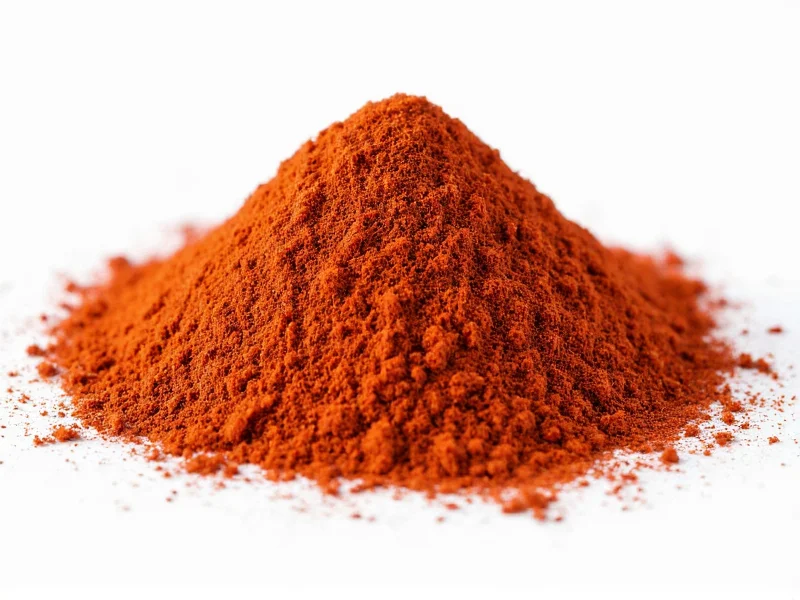Sumac isn't just another spice on your rack—it's the secret weapon behind authentic Middle Eastern and Mediterranean dishes. This deep red powder made from dried berries delivers a unique citrusy tang with subtle floral notes that transforms everything from grilled meats to salads. When you're staring at an empty sumac container mid-recipe, knowing the right substitute makes all the difference between a dish that sings and one that falls flat.
Understanding Sumac's Flavor Profile
Before reaching for alternatives, understand what makes sumac special. Unlike lemon or vinegar which provide pure acidity, sumac offers a complex tartness with earthy undertones and a beautiful purple hue. It contains about 30% less acidity than lemon juice, making it gentler on delicate ingredients. Professional chefs value sumac for its ability to brighten dishes without overwhelming other flavors—a quality that's challenging to replicate perfectly.
Top 5 Sumac Substitutes Ranked by Culinary Performance
Not all substitutes work equally well across different applications. Here's how the top options perform based on flavor matching, color retention, and recipe compatibility:
| Substitute | Flavor Match | Color Match | Best For | Substitution Ratio |
|---|---|---|---|---|
| Lemon juice + paprika | 9/10 | 7/10 | Salads, dressings, wet applications | 1 tsp sumac = 1 tsp lemon juice + ¼ tsp paprika |
| Amchoor (mango powder) | 8/10 | 3/10 | Dry rubs, stews, Indian-Middle Eastern fusion | 1 tsp sumac = 1 tsp amchoor |
| Vinegar + paprika blend | 7/10 | 6/10 | Dry spice blends, marinades | 1 tsp sumac = ½ tsp vinegar powder + ½ tsp paprika |
| Za'atar (sumac-containing blend) | 6/10 | 8/10 | When sumac is minor component | 1 tsp sumac = 1½ tsp za'atar |
| Cranberry powder | 5/10 | 4/10 | Emergency substitute only | 1 tsp sumac = 1 tsp cranberry powder |
When to Use Each Substitute
Lemon Juice and Paprika Combination
This dynamic duo works best for most wet applications where sumac's tartness shines. The lemon provides the essential acidity while paprika contributes earthiness and color. For fattoush salad or hummus, use freshly squeezed lemon juice rather than bottled for superior flavor. Remember that liquid substitutes alter moisture content, so reduce other liquids slightly when using this alternative for sumac in cooking.
Amchoor as a Dry Sumac Alternative
Professional chefs specializing in fusion cuisine increasingly turn to amchoor when seeking a dry sumac replacement. This Indian spice made from dried green mangoes delivers comparable tartness without added moisture—perfect for dry rubs and spice blends. While it lacks sumac's distinctive color, amchoor won't alter your dish's appearance like citrus-based substitutes. Use it when preparing grilled meats or roasted vegetables where liquid substitutes would create steaming instead of searing.
Vinegar Powder Blends for Authentic Texture
For applications requiring dry ingredients like spice rubs or dry marinades, vinegar powder combined with sweet paprika creates the closest texture match. This substitute for sumac in dry rubs maintains the critical dry consistency while delivering similar tang. Mix equal parts vinegar powder and paprika, then add a pinch of cumin for complex flavor matching. This combination works particularly well for za'atar-inspired blends when sumac isn't available.
Recipe-Specific Substitution Guide
The ideal substitute varies dramatically based on your dish. Here's what professional chefs recommend for common applications:
- Fattoush salad: Use lemon juice and paprika blend (1:1 ratio) tossed with toasted pita at the end—never cook this combination
- Grilled chicken: Vinegar powder and paprika dry rub maintains proper searing while delivering tang
- Hummus: Amchoor provides consistent tartness without altering texture like liquid substitutes
- Rice dishes: Za'atar works well when sumac is a minor component (use 1.5x the amount)
- Mezze platters: Cranberry powder offers visual appeal though flavor differs significantly
Common Substitution Mistakes to Avoid
Many home cooks make these critical errors when seeking sumac alternatives:
- Using straight lemon juice without balancing: Creates excessive acidity that overwhelms other flavors
- Substituting tamarind paste: Adds sweetness that conflicts with sumac's clean tartness
- Ignoring color impact: Sumac's purple hue affects dish appearance—paprika helps compensate
- Using bottled lemon juice: Contains preservatives that alter flavor compared to fresh alternatives
- Not adjusting quantities: Sumac is milder than pure citrus—start with less and taste as you go
Creating Your Own Sumac Substitute Blend
For frequent Middle Eastern cooking, prepare this versatile sumac replacement blend:
- Mix 2 parts paprika, 1 part citric acid powder, and 1 part dried thyme
- Add a pinch of allspice for complex flavor matching
- Store in an airtight container away from light
- Use 1:1 ratio in place of sumac for most applications
This blend maintains stability better than fresh citrus alternatives and delivers consistent results across multiple recipes. Professional test kitchens report this sumac spice substitute alternative performs exceptionally well in commercial settings where ingredient consistency matters.
When Substitutes Won't Work
Some traditional dishes simply require authentic sumac. These include:
- Dibs rumman (sumac syrup) for Middle Eastern desserts
- Traditional qabargah (Kashmiri lamb ribs)
- Authentic Turkish acuka (red pepper and walnut spread)
In these cases, no substitute adequately replicates sumac's unique chemical composition. For serious enthusiasts of Middle Eastern cuisine, keeping a small container of genuine sumac (which lasts 1-2 years when properly stored) proves more valuable than constantly seeking alternatives.











 浙公网安备
33010002000092号
浙公网安备
33010002000092号 浙B2-20120091-4
浙B2-20120091-4